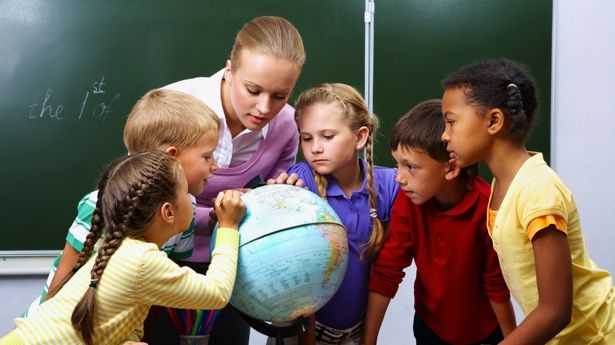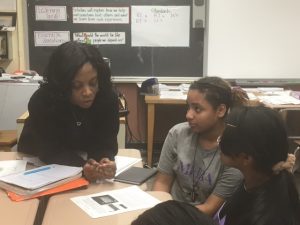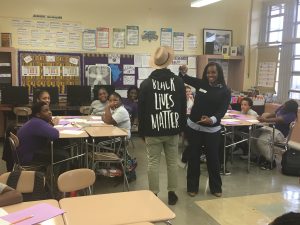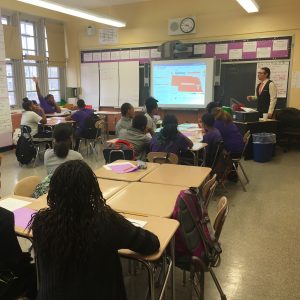
19 Nov Democratic classrooms: Giving Children Voice and a Place that will Listen to their Fears and Confusion
In leading Mott Hall Bridges Academy, I found that it’s not the title that I carry that will help our children cope with fear and confusion, it is the act of listening and honoring their voices that allows them to be reassured or express their concerns. Creating democratic spaces that allow for authentic conversations led by children, present opportunities for teachable moments that help to invest and inform in our children so they understand history, issues with racism, classism, and socialism.

- Ask the important question first. Begin with, “How are you feeling about what is going on in the world today?” This open-ended question give children the opportunity to share their experiences and reflection on the current events without leading their thoughts or any implication of judgement based on what they will say. For many of my girls, they wondered about whether they would be discriminated against based on their bodies and skin color based on comments made by President-elect Donald Trump. In our school we teach our children the value of tolerance and being kind to one another, if any scholar or adult should fail to honor this culture in our school, there are consequence for their behaviors. Despite the offensive, degrading, and demoralizing comments Donald Trump has made his win symbolizes the failure of adults to protect the moral values they have been taught to live by. Their sentiments are valid and have to be acknowledge, but it also created the opportunity to discuss previous leaders around the world who imposed similar views that impacted history and how we as a community must unite to figure out how we can combat views that are not our own through the examples of those who fought on our behalf.

2. Reinforce self-worth and value. Fear and confusion, creates doubt in one’s existence and their ability to control their own future. We must celebrate the strides through acts of activism and have created platforms that shed light on the injustices, lack of equity, and biases that exist in our society. Whether it’s, “Black Lives Matter” that serves to bring awareness of police brutality against black people or “Occupy Wall Street”, which highlighted the greed that exists on Wall Street, there are people willing to come together to disrupt oppressive behaviors that have paralyzed progress amongst race and class. Having children explore methods of non-violence to share their message, galvanize their community, and bring awareness of an issue is critical to their development as positive productive individuals. With the use of social media, children learn that they are NOT INVISIBLE and can participate in social justice activism that gives them voice beyond their classrooms and community.

3. Knowledge is Power. It important that we teach how history tends to repeat itself and the crises that we are facing today have occurred in the past. In order for our children to grasp what is actually happening in the world, we must be honest about past in which racism, classism, bigotry, was at the root of many historical events. Although we have made progress, there still remains many systems in government and ideologies that continue to divide people across the globe, which is used to oppresses and put fear into millions of people. Once our children know this, they can have informed conversation and understand the importance of building tolerance in our society.
We must recognize that children in our classrooms are the leaders of tomorrow, therefore we must give them voice, keep them informed, and remind them of their value in this world.

